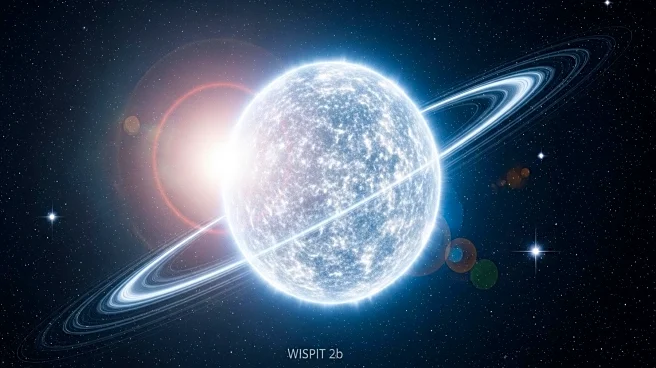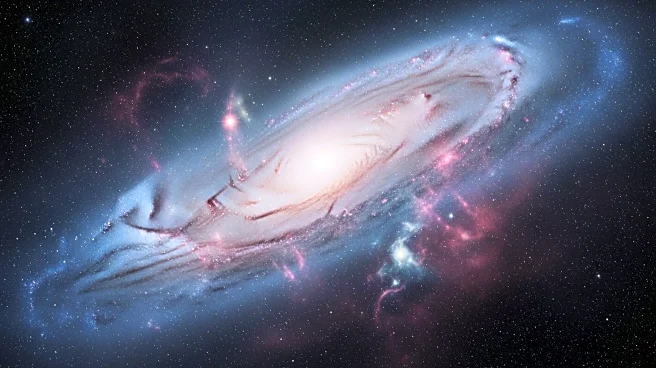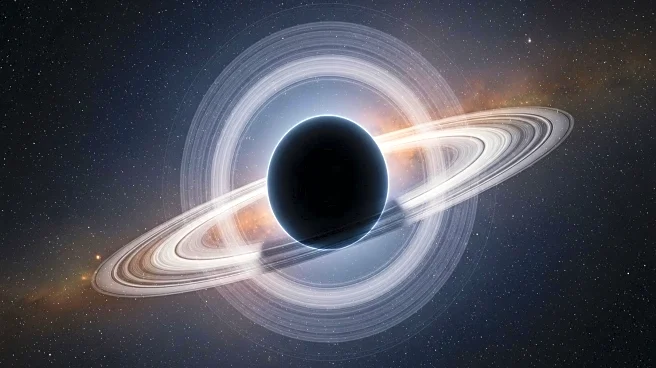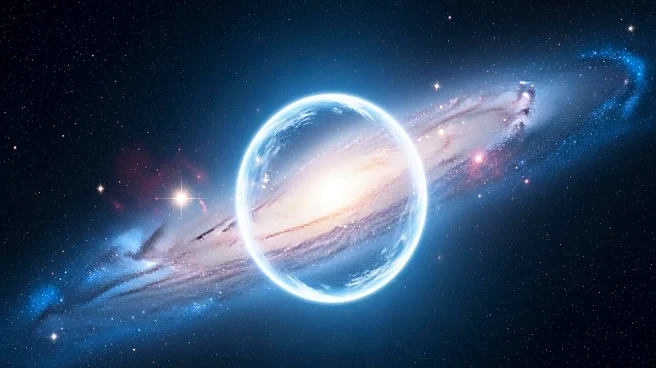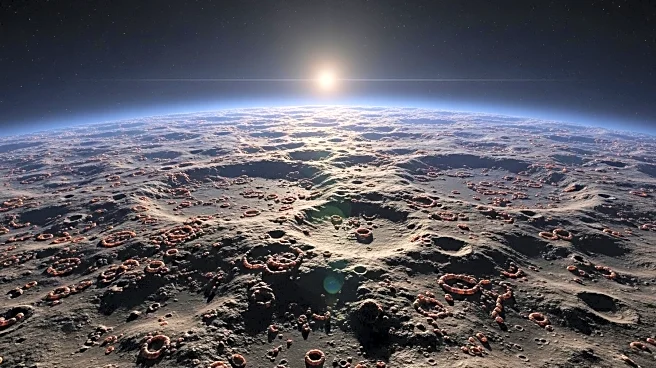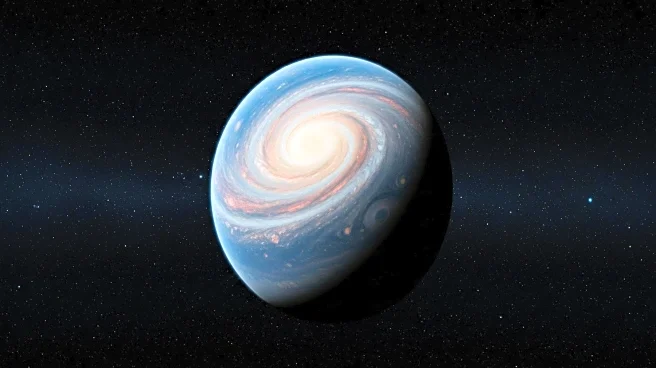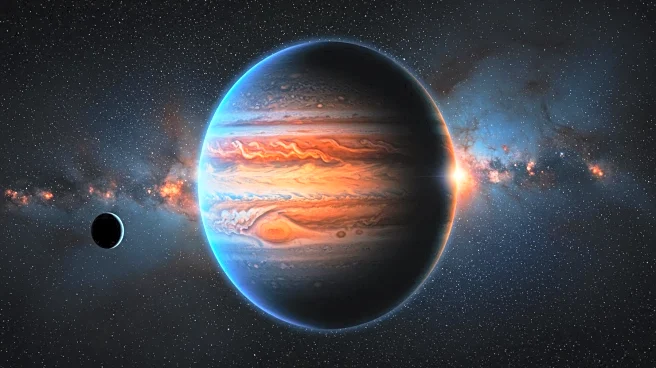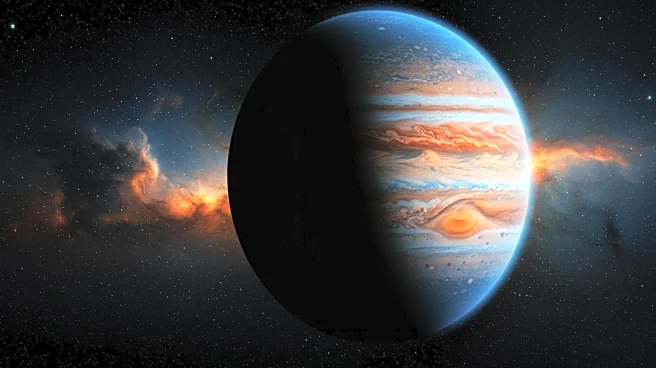What's Happening?
An international team of astronomers, led by PhD student Richelle van Capelleveen from Leiden Observatory, has successfully imaged a baby planet, WISPIT-2b, orbiting within a gap it has cleared in the protoplanetary disk of a young star, TYC 5709-354-1. This star is located 430 light-years away in the Scorpius-Centaur association. The discovery marks the first detection of an embedded planet in a cleared gap, providing direct observational evidence of planet formation processes. The planet, approximately five times the mass of Jupiter, was observed using the SPHERE instrument on the European Southern Observatory’s Very Large Telescope in Chile. Over 18 months, astronomers captured multiple images revealing the planet's orbital motion. Additionally, observations with the Magellan Telescope showed hydrogen gas accreting on the planet, indicating it is a rare example of a growing protoplanet.
Why It's Important?
This discovery is significant as it provides strong evidence supporting theories about planet formation, particularly the formation of gas giants on wide orbits. The ability to directly observe a planet clearing a gap in its protoplanetary disk offers valuable insights into the early stages of planetary development. Such findings can enhance understanding of how planets like Jupiter and Saturn may have formed in our own solar system. The research also highlights the capabilities of advanced astronomical instruments in detecting and studying distant celestial bodies, potentially leading to further discoveries in the field of exoplanetary science.
What's Next?
The system, featuring WISPIT-2b, is expected to serve as a benchmark for future studies on planet formation. Continued observations and research may provide deeper insights into the dynamics of protoplanetary disks and the processes leading to the formation of gas giants. The findings could influence theoretical models and simulations of planetary formation, aiding in the prediction and identification of similar systems elsewhere in the universe. As technology advances, astronomers may be able to observe more such systems, further expanding our understanding of the universe.
Beyond the Headlines
The discovery of WISPIT-2b also raises questions about the potential for life-supporting conditions in such systems. While the current focus is on the formation of gas giants, understanding the conditions within protoplanetary disks could eventually lead to insights into the formation of habitable planets. The study of accreting planets may also contribute to knowledge about the chemical composition and atmospheric conditions of newly formed planets, which are crucial for assessing their potential to support life.


